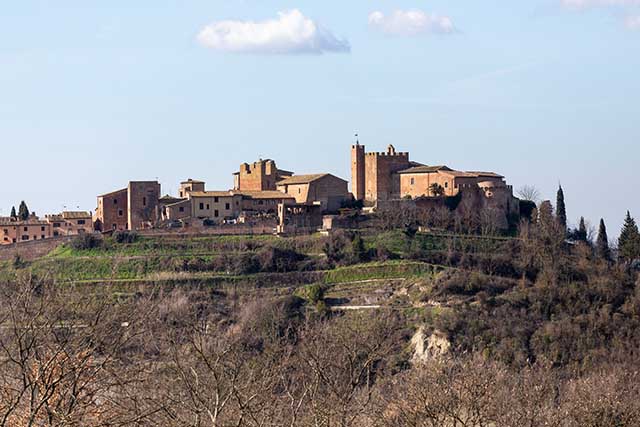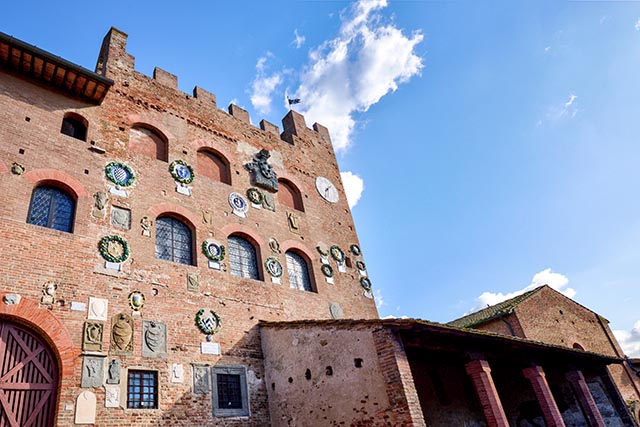Municipality of Certaldo
Certaldo was originally one of the Valdelsan castles of the Counts Alberti, but it soon entered into the orbit of Florence. Outside the oldest nucleus occupying the highest part of the hill, the buildings of the village, fortified by a surrounding wall circuit during the early 14th century, had progressively clustered, in the direction of the road toward the Elsa Valley. In map RL 12278 of the Windsor Castle collection, Leonardo represents Certaldo in the forms reached at that time, including its unmistakable turreted profile. Leonardo had certainly met Lattanzio Tedaldi in Florence, at the beginning of the 16th century, the vicar of Certaldo during the second half of 1503. On that occasion, Tedaldi commissioned the cenotaph in Boccaccio’s memory from sculptor Giovanfrancesco Rustici, friend and companion to Leonardo.
The Palazzo Pretorio in Certaldo will be hosting, on the occasion of the Leonardian Year 2019, the exhibition Paesaggi in trasformazione tra il Medioevo e l’età di Leonardo (Landscapes in transformation between the Middle Ages and the age of Leonardo). Suggestive virtual reconstructions show the evolution of the landscape of this part of the Valdelsa, from the Middle Ages, before and after the foundation of the mythical city of Semifonte, on up to the time when, in the early 16th century, Leonardo represented, in one of his most famous maps, the Elsa and its system of fortified villages, among which we can recognize the turreted profile of Certaldo.
The place where the beautiful castle was built, still dominating the valley of the Virginio in Val di Pesa, has very ancient origins. Of the 12th century castle there remains almost nothing more than the small single-apse church that preserves some interesting architectural details, such as the single-light window in decorated stone. At that time, the castle was controlled by the family of the Counts Alberti. Leonardo depicted Santa Maria Novella at the time when it was used as a country house, but had still kept the characteristics of the early medieval castle. Only in the 19th century was it transformed into the neo-Gothic castle that we see today.







